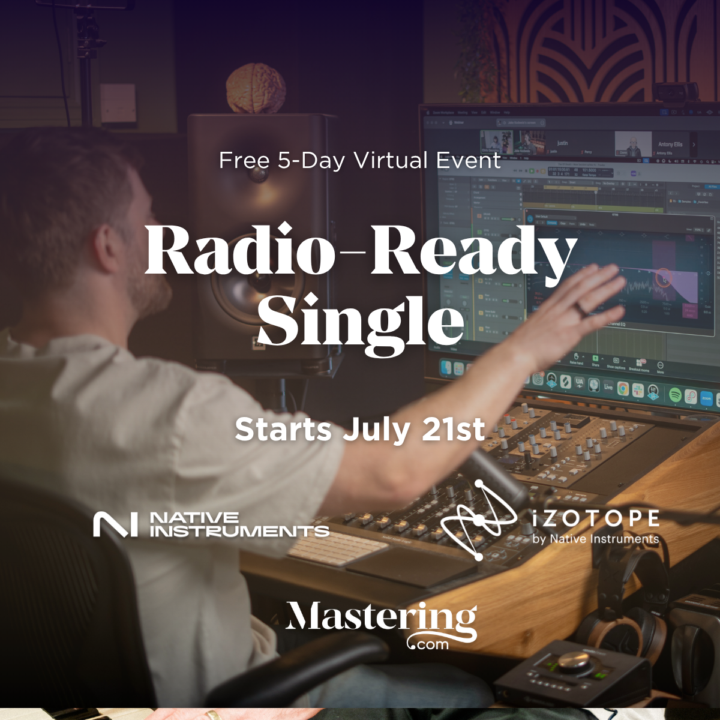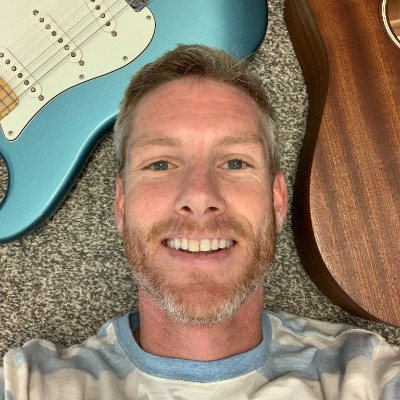Activity
Mon
Wed
Fri
Sun
Oct
Nov
Dec
Jan
Feb
Mar
Apr
May
Jun
Jul
Aug
Sep
What is this?
Less
More
Memberships
Closed Group
4.3k members • Free
Fix-The-Mix™
26.4k members • Free
Unison Producer Growth Hub
36.2k members • Free
Pocket Singers FREE
11.1k members • Free
122 contributions to Fix-The-Mix™
How long to record a song?
Yes, yes, I know it's somewhere between 2 hours and a year lol I'm talking with a friend I've been doing some recording for - and he is paying me - but trying to set some budgets and expectations for future work.The plan is to record two songs a month for his own sync library. So I'll pose a hypothetical scenario and would love to hear what you'd suggest to clients. - working with singer/songwriter with okay vocal skill (sometimes really good, sometimes struggle) and not a great guitarist - music is roots/americana/classic country rock feel - create a scratch track to use with remote drummer, playing guitar while singer puts down temp vocal track - work with drummer to get the right drum beat and dynamics - record all instruments yourself, rhythm and lead guitars, bass, two keyboard parts - singer can record vocals on own time and own gear (he travels a lot for work so bought gear to do that - it's decent quality.) - edit vocals - probably get replacement vocal done - mix - master I'm a pretty good guitarist but I find it takes several takes to find the right lead guitar parts. I'm decent at creating ostinatos and fills on keyboard but I ain't no piano player lol. What would you tell a customer to expect for time on a project like this.
1 like • Jul 27
@J Es reading the OP again, I see there’s waaaay more on the itinerary than recording. I hope we can get a final update after the song is done to see how long it actually took. I mean he’s already been working on it and hasn’t “officially” begun. He’s consulted, listened, recommended ear training, recorded, listened again, spent time estimating how long things will take, conferred with this group, replied ….And so on. This is all time spent working that I personally count toward the completion of the song. In my eyes, this song production started a week ago.
Our biggest event yet
Introducing Radio-Ready Single: our newest free virtual event, and our biggest event yet. Over five days (yes... FIVE days!) you’ll watch the entire process of creating a professional song from scratch, from production, to mixing, to mastering. It’s completely free to attend, and hosted in partnership with Native Instruments and iZotope - just click below to register. Starts Monday, July 21st at 9am Pacific / 12pm Eastern / 5pm UK time. https://courses.mastering.com/event_full/1751479153933x610297147243888600?utm_source=FTMSkool&utm_medium=Event&utm_campaign= See you there!

The AI Takeover of Music
The AI takeover of the music industry has begun. The robots have gone mainstream, and in classic 21st century fashion…. the response has been to simply shake our collective fist at the sky and bemoan the inevitable. Every time I refresh my feed, there’s a new think piece decrying the “unfairness and injustice” of it all… And while they’re not wrong… they’re also not useful. Because there’s a big difference between what should be true and what actually is. The idea that somehow (through…. legislation or something?) we’re going to fend off the AI and tech overlords from encroaching on the arts should be true…. …. but it simply isn’t. The AI wave is coming, and there is no stopping it…. despite the (often compelling) arguments. But whether it was the emergence of virtual instruments, auto-tune, or streaming platforms, every generation has prophesied the “end of music” as new tools become available. And while this does means the slow death of some really precious art forms…. … it also marks the emergence of new ones. Artificial intelligence will likely dominate the mass music markets, in the same way a 3D printer can recreate the Statue of David in a matter of hours. AI will know what we want more than we do, and in that regard, it will certainly replace large parts of the music industry. But I believe the AI revolution will also reveal a hidden truth about music (and art in general) that many of us have forgotten in the last two decades…. …. that art isn’t about the final product at all, but rather the struggle to create it. The truly enduring pieces of art aren’t just pleasing to consume, they tell a story of the artist behind it. The beauty of the Sistine Chapel is partly knowing that Michelangelo spent four years, bent backward, meticulously perfecting each detail. Da Vinci was never fully satisfied with the Mona Lisa… which is why it was found unfinished in his studio after his death (she’s missing her eyebrows). The humanity behind the art is what makes it art in the first place.
3 likes • Jul 5
I’m fine with AI making music. It’s the social media accounts that make me an adversary to AI. The emails and lame posts and generic names and off Topic comments, benign looking profile pics, engagement bait, rage bait, thirst trap. I say put everything behind a pay wall. A significant paywall. These free hangouts are breeding grounds for AI to find new ways to pollute the internet.
Analog emulation compression plugin tempo syncing
Hey, guys. I haven't had to come on here and ask a question in a hot minute, because thanks to your advice, my mixes have gotten a lot better. But I do have a new one. On an analog emulation compressor plugin, how do I synchronize my attack and release to the tempo of the track? For instance, if I wanted to do groove style compression on one of my beats using Softube's FET compressor, which measures attack and release in just plain numbers instead of milliseconds from 0.5 to 10 in increments of 0.1, how would I know I have synced times? I'm not skilled enough to be able to tell just by hearing.
0 likes • Jun 16
@Rick Sanders yeah it’s a fine line. I look to see if the needle slows down before topping out. Like a car at a stop sign (but faster). I typically use a fast comp and a slow one in sequence. One fast attack, slow release to catch the outlying dynamics and an other for groove or smoothing. Depends on the instrument for attack. Drums get a slow one because they are already punchy. Pads and harmonic stuff get slower attack.
Bot central
Is it me or are there a lot more bots in this group than there used to be? An overwhelming amount I would say, almost making it hard to differentiate between real folks w concerns and questions and click bait. 😔
2 likes • Jun 16
Yes it terrible. I was a mod in an other group and I locked that down but it takes work. I can smell them. So many red flags is you know what to look for. But wow. Here and unison are cesspools for bots. Down goes another platform. I’m Surprised FTM doesn’t run a tighter ship. They have their act together on the content but their house is a mess.
2 likes • Jun 17
@Kat V. For sure. That’s why our other group Closed. Too many just camping out waiting for free stuff. I’m investing in a community this year son I won’t be around Skool much. I see why. It’s a captive audience that is already in a certain sales demographic. Just ripe for solicitation from all Sides.
1-10 of 122
@jason-tufts-9926
Music as NITES+WKNDS on streaming and Grizzly Thief on SoundCloud. I like making music and surfing and riding bikes and playing with my family.
Active 13h ago
Joined Apr 29, 2024
California
Powered by






